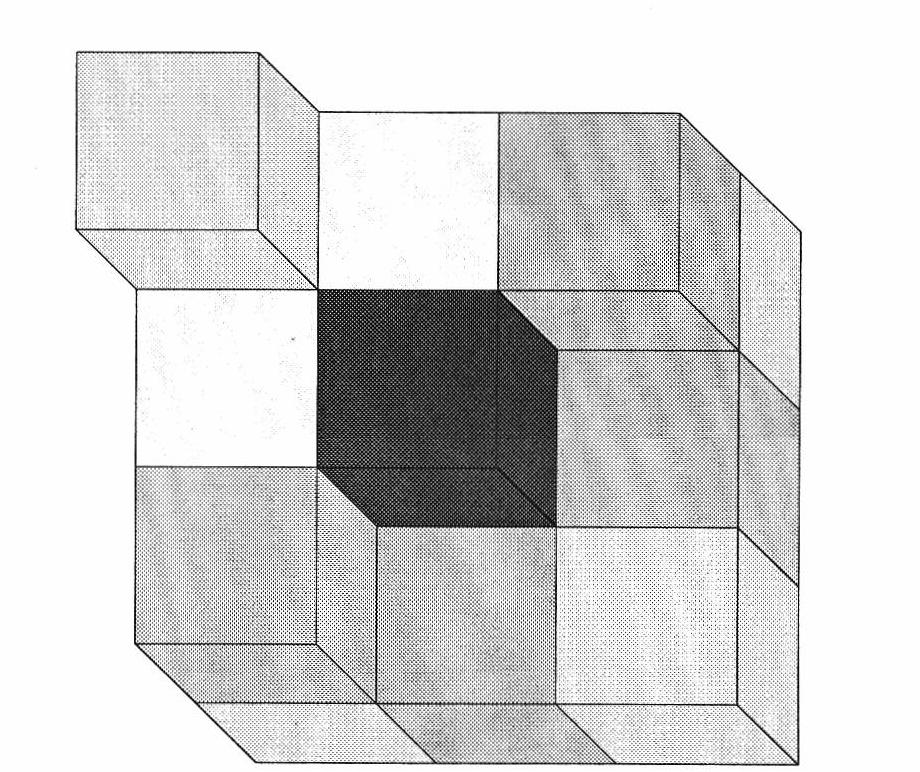Method for denoising space self-adaption threshold video based on Surfacelet transform domain
An adaptive threshold, transform domain technology, applied in the field of video processing
- Summary
- Abstract
- Description
- Claims
- Application Information
AI Technical Summary
Problems solved by technology
Method used
Image
Examples
Embodiment 1
[0052] refer to figure 1 , the present invention is a kind of space adaptive threshold video denoising method based on Surfacelet transformation domain, and concrete implementation process is as follows:
[0053] Step 1. Input the noisy video, and perform Surfacelet transformation on the noisy video, decompose 4 layers, and the number of direction sub-bands in each layer is 192, 192, 48, 12 respectively;
[0054] Step 2. Estimate the standard deviation of the highest frequency layer noise in the Surfacelet transform domain using the following formula:
[0055] σ (i,j,k) =median(|y(i,j,k)|) / 0.6745
[0056] In the formula: y(i, j, k) is a certain direction sub-band of Surfacelet transformation domain;
[0057] The Monte Carlo algorithm is used to estimate the standard deviation relationship of each layer of Gaussian white noise after Surfacelet transformation, and the following formula is obtained:
[0058] σ n = σ ...
Embodiment 2
[0088] The implementation of the method for denoising video based on the spatial adaptive threshold value of the Surfacelet transform domain is the same as that in Embodiment 1.
[0089] The denoising effect of the present invention can be further illustrated by the following experiments:
[0090] 1. Experimental conditions and content
[0091] The experimental simulation environment is: MATLAB R2009b, CPU AMD Athlon×23.00GHz, memory 3.25G, Window7 Professional.
[0092] The experimental content includes: use the video sequence Mobile and Coastguard with the size of 192×192×192, and the variance of adding noise is 20, 30, 40, 50 respectively. Mobile video sequence has strong directionality and small motion range, while Coastguard video sequence contains rich detail information and large motion range. The Surfacelet transform decomposes into four layers, and the number of direction subbands in each layer is: 192, 192, 48, 12.
[0093] 2. Experimental results
[0094] With t...
Embodiment 3
[0097] The implementation of the method for denoising video based on the spatial adaptive threshold value of the Surfacelet transform domain is the same as that in Embodiment 1.
[0098] Figures (4d) and (6d) show the denoising results based on the Surfacelet transform bayes threshold algorithm. From the denoising results in the above two figures, it can be seen that the Surfacelet transform-based bayes threshold algorithm does not use the coefficient neighborhood information of the Surfacelet transform domain, see Figure ( 6d) The sailboat mast, especially the top, is not clear, and the texture details in Figure (4d) are seriously lost, and the denoising results are not ideal. Compared with the details of the above two figures, the present invention has higher resolution.
PUM
 Login to View More
Login to View More Abstract
Description
Claims
Application Information
 Login to View More
Login to View More - R&D
- Intellectual Property
- Life Sciences
- Materials
- Tech Scout
- Unparalleled Data Quality
- Higher Quality Content
- 60% Fewer Hallucinations
Browse by: Latest US Patents, China's latest patents, Technical Efficacy Thesaurus, Application Domain, Technology Topic, Popular Technical Reports.
© 2025 PatSnap. All rights reserved.Legal|Privacy policy|Modern Slavery Act Transparency Statement|Sitemap|About US| Contact US: help@patsnap.com



